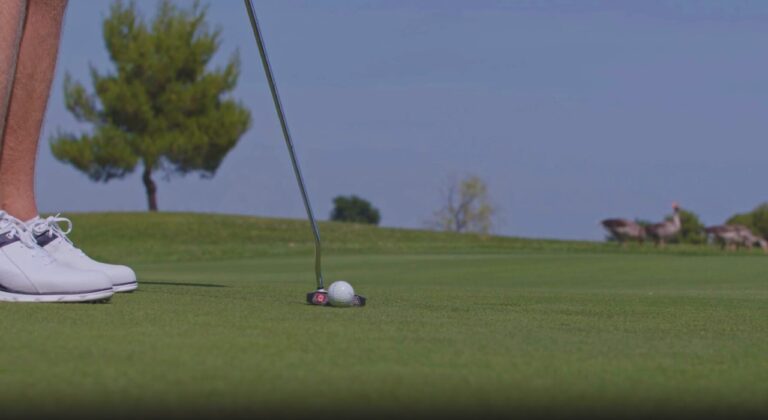The right putter can make all the difference on the golf course, and one of the essential considerations is the length. Ensuring that it is the right length not only improves your chances of sinking a putt but also ensures that your posture and swing mechanics are spot-on. So, how do you determine the perfect length for you? Let’s discuss the world of putter length, its importance, and how to measure it accurately.
Why Is It So Important?
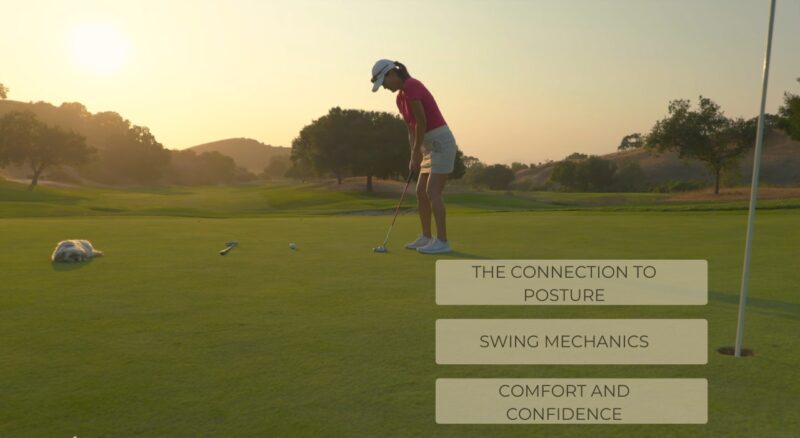
The Connection to Posture
A putter that’s too long can force a golfer to stand too upright, whereas one that’s too short may cause the golfer to hunch over excessively. Both of these postures can lead to inconsistent putts.
Swing Mechanics
A correct putter length ensures that your eyes are over the ball or just inside of it. This positioning promotes better alignment and a more consistent swing path.
Comfort and Confidence
Playing with a putter that feels comfortable in your hands can increase your confidence in the green, leading to better performance.
Standard Lengths
The industry has established some standard putter lengths based on player height. While these aren’t one-size-fits-all, they serve as a good starting point.
| Player’s Height | Suggested Putter Length |
| Under 5’0” | 32 inches |
| 5’0” to 5’4” | 32-33 inches |
| 5’4” to 5’8” | 33-34 inches |
| 5’8” to 6’0” | 34-35 inches |
| Over 6’0” | 35-36 inches |
How to Measure
1. The Traditional Method
- Stand in your putting stance: Position yourself as you would when you’re about to strike a putt.
- Have a friend measure: Ask a friend to measure the distance from the ground to the top of your hands where they grasp the putter.
- Result: This measurement gives you the ideal putter length for your stance.
2. The Wrist-to-Floor Method
Another method to determine length is the wrist-to-floor measurement. Here’s how to do it:
- Stand upright: Your back should be straight, and your shoulders relaxed.
- Measure: Have someone measure from your wrist crease (where the hand and wrist join) down to the floor.
- Result: This measurement often correlates closely with the length you’d need.
Tips for Choosing the Right One
- Go Beyond Standard Recommendations: The tables and standards are a good starting point, but personal comfort and putting style can influence the best choice for you.
- Consult a Professional: A club-fitting expert can provide recommendations tailored specifically to your game.
- Test Different Lengths: Before committing to a purchase, try various putter lengths to see which feels the most natural.
- Consider Adjustability: Some modern putters come with adjustable lengths, giving players the flexibility to fine-tune their length.
Experiment and Adjust
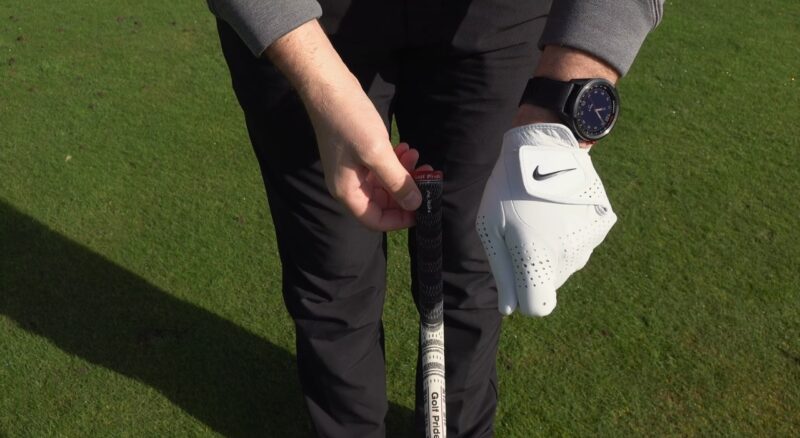
Just as in any aspect of golf, there’s no substitute for trial and error. You might find a recommended putter length that feels awkward or a seemingly non-standard length that seems just right. Here’s how you can further fine-tune your game:
Modify Your Grip
Before making drastic changes to your putter’s length, experiment with your grip. Some players find that by adjusting how they hold the putter, they can effectively change the “feel” of its length.
Re-Grip
Sometimes, the thickness or type of grip can make the putter feel longer or shorter. By customizing your grip, you can change the overall feel without altering the shaft’s length.
Stay Updated
Manufacturers continually introduce new technologies and innovations in the world of golf equipment. Stay informed about the latest putter designs, as they might offer unique length or balance characteristics that could be perfect for your game. There are other details that can impact your style and efficiency, even the selection of hand for the glove.
A Note on Belly and Long Putters
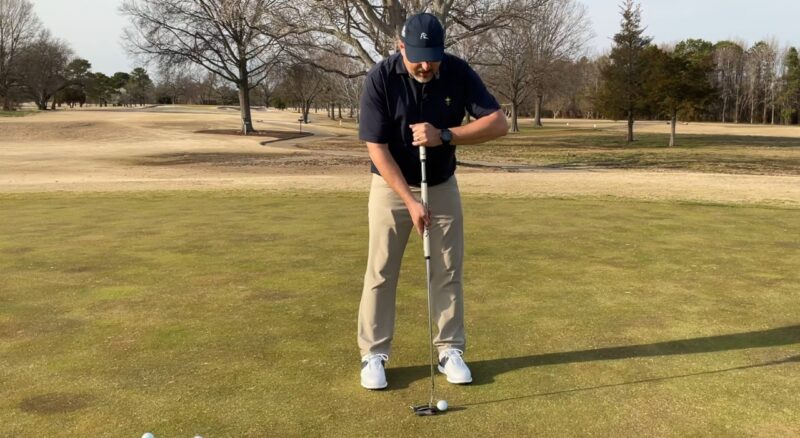
It’s worth mentioning that traditional putters aren’t the only options available. Belly variations and long ones offer different lengths and anchoring points:
- Belly Putters: These are typically between 41 to 44 inches in length and are anchored against the player’s belly.
- Long Putters: Ranging from 48 to 52 inches, long putters are anchored against the player’s chest.
Both of these options have seen periods of popularity on professional tours, and they might be worth considering if you’re looking for a significant change in your putting approach.
Making Adjustments Over Time
As with all elements of your golf game, your relationship with your putter may evolve over time. Factors such as changes in your physical condition, adjustments in your technique, or even the wear and tear of the putter itself can influence your requirements. Here’s what you should keep in mind as you continue your golf journey:
Regularly Re-evaluate Your Stance
Your body changes with time. As you age or undergo physical changes, your posture and stance might also shift. Regularly checking your stance and measuring putter length can help ensure you always have the best fit.
The Importance of Balance
While length is crucial, the balance of your putter also plays a significant role. Head-heavy ones can feel longer due to their weight distribution, while face-balanced ones can feel shorter. Always consider balance when re-evaluating your choice.
Maintenance
A worn-out grip or a shaft that’s been compromised can influence the feel and effectiveness of your putter. Regular maintenance, like re-gripping and shaft checks, can keep your putter in top condition and ensure consistent performance.
Embrace Change When Necessary
Golf is a game of adaptation. If you find that your once-perfect putter no longer suits your style, don’t hesitate to make a switch. Whether it’s a slight adjustment in length or a complete change in putter type, always prioritize what feels right and boosts your performance.
Learning from Others
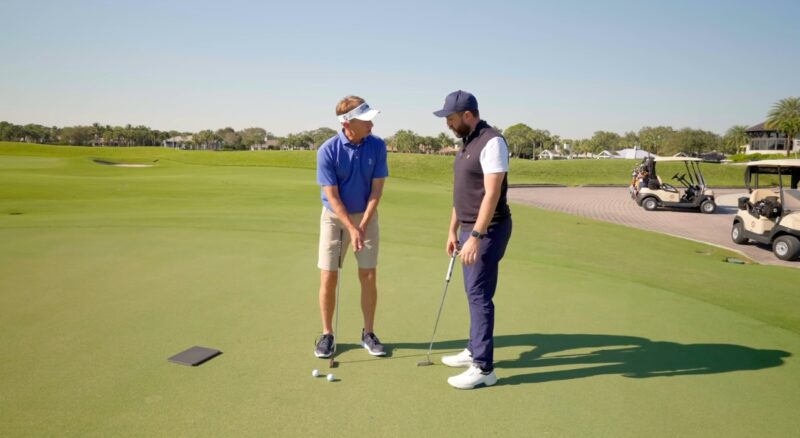
One of the best ways to gain insights into putter length and its effect on the game is by observing and discussing with fellow golfers:
- Watch the Pros: Professional golfers often tweak their equipment, including putters, based on the course, their physical condition, and other variables. Observing these changes can provide valuable insights.
- Engage in Discussions: Local golf clubs, online forums, and golfing buddies are great resources. Sharing experiences and insights can lead to newfound knowledge about putter length and other nuances of the game.
FAQs
Can I Alter the Length of My Current Putter Instead of Buying a New One?
Yes, you can! Putter shafts can be shortened or extended by a professional club fitter. However, when altering the length, make sure to consider the balance and weight distribution, as they may be affected.
How Do Different Green Conditions Affect the Choice of Putter Length?
While the length mainly influences stance and swing mechanics, green conditions can influence putter choice in terms of weight and balance.
On faster greens, players might prefer a putter that offers better control, which could indirectly relate to its length and overall feel. However, the primary consideration should still be your posture and alignment.
If I Switch from A Traditional Putter to A Belly or Long One, how Should I Determine the Right Length?
For belly putters, the anchor point is your belly button. When you set up your stance, the putter should comfortably reach this point.
For long ones, the anchor is higher, typically around the chest or chin. As always, personal comfort and a consistent, repeatable stroke are key indicators of the right length.
Does Arm Length Play a Role in Choosing the Right Putter Length?
While height is a general indicator, arm length is more specific and can play a significant role. Players with longer arms might require shorter putters than those with shorter arms of the same height.
This is because the hands will naturally hang lower for individuals with longer arms, affecting the ideal length.
Is There a Difference in Choosing Putter Length for Junior Players?
Yes, junior players not only have smaller statures but are also still growing. It’s essential to ensure that their length is appropriate for their current height and posture. Moreover, since they are still growing, regular check-ups on their equipment fitting are crucial.
How Does Shoe Type or Sole Thickness Influence Putter Length?
A: The type of golf shoes and their sole thickness can slightly influence your standing height on the green. Thicker soles can add a bit of height, which might necessitate a minor adjustment in putter length.
However, the difference is often minimal. It’s still a good practice to wear your regular golf shoes when getting fitted for a putter.
Final Words
Finding the perfect putter length is a journey of self-discovery. It’s about understanding your body, your stance, and your swing. While measurements and guidelines provide a roadmap, your comfort and confidence in the green are the ultimate determinants.
Whether you’re a seasoned golfer or just starting, investing the time to understand and select the right putter length will undoubtedly pay dividends in your game. After all, as the saying goes, “drive for show, putt for dough!”

